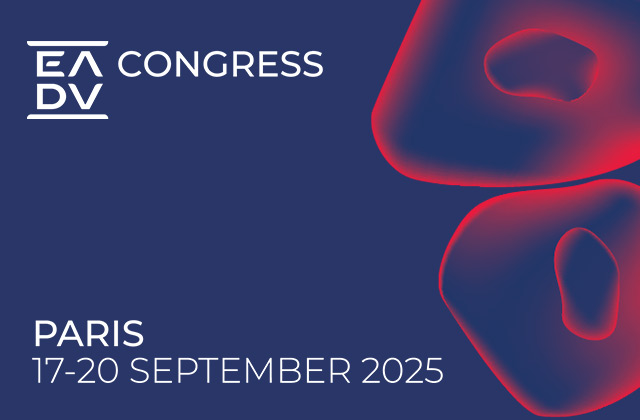
The theme of this year’s annual meeting of the American Academy of Neurology (AAN) in San Diego was “superheroes.” The meeting came complete with comic book graphics and dramatic action movie music for plenary speakers. It’s true that neurologists must be superheroes to do one of the most challenging jobs in the clinical world, tackling many difficult or impossible-to-treat diseases that can have profound effects on patients’ livelihoods, personalities, and families. While there are many new tools and weapons available in neurologists’ fight against CNS diseases, it is still not clear exactly how to use some of these new tools and what the impacts will be for patients.
As with any conference recap, it is impossible to comprehensively summarize everything that was discussed, particularly for a broad and heterogenous area like neurology. However, our team noted a few themes that we felt were top of mind for many presenters and attendees:
Precision Medicine…or Common Mechanisms of Disease?
With the success of “precision medicine” in oncology, there has been a desire and significant effort to apply this concept (and implications for drug discovery / development) to neurology. While there have been some notable successes (like the approval of Qalsody for ALS patients with SOD1 mutations), it is also true that many neurological diseases share biological mechanisms, and an approach that focuses on targeting these common mechanisms may turn out to be more impactful (and potentially more lucrative).
A few notable presentations at this year’s conference spoke to an evolving understanding of common biological mechanisms, including:
- Presence of clonally expanded CD8+ T cells in Alzheimer’s, Parkinson’s, and ALS (however, it is not yet clear whether their presence is pathogenic or adaptive, and what the implications are for a therapeutic approach)
- Potential protective role of GLP1s across multiple neurological diseases, including Alzheimer’s disease and addiction
- Potential for CD19 CAR-T therapies to treat autoimmune CNS indications (including those that would benefit from B-cell depletion)
While we expect the push towards precision neurology to continue, we look forward to seeing the results of efforts to target common biological mechanisms to improve outcomes for patients across multiple difficult diseases.
The Continuing Rise of Artificial Intelligence (AI)
The advent of large language models (LLMs) and other advanced AI technologies have seemingly pervaded every aspect of daily life, including in the practice of neurology. AI is becoming an increasingly powerful tool to support neurologists in more accurate and impactful diagnostic and treatment decision making, as well as more efficient and less burdensome execution of operational tasks. A few (potential and real) applications of note that we heard about at AAN include:
- More accurate and timely diagnosis of quickly progressing neurological diseases – In particular, AI may be especially helpful in more quickly diagnosing diseases that benefit from being treated earlier in the disease process, but where patients often present to a non-specialized provider (such as a primary care physician), who may not have the background and training to appropriately identify the clinical signs and symptoms
- Ambient clinical documentation tools that can listen to interactions between neurologists and patients and automatically create clinical summaries, summarize discharge notes, and suggest diagnosis codes (and learn in response to neurologist refinements or feedback)
- Addressing neurologist capacity issues (or at least, capacity issues caused by referrals from ER doctors for a neurology consult) by using AI algorithms to guide ER physicians on when a neurology consult may be needed and what tests should be conducted in the meantime
While these (and many other) applications are exciting and have the potential to be transformational, they suffer from many of the same limitations that we all experience when using AI tools in our daily lives – namely, hallucinations, biases, and issues with the reliability or reproducibility of results. It remains to be seen whether and how AI tools will be adopted as a part of neurologists’ armamentarium. However, there seemed to be a great deal of hope and enthusiasm for how these tools may benefit neurologists and their patients.
Pricing and Clinical Value
With the advent of more costly, sophisticated treatment options for various neurological conditions, clinicians are rightfully asking questions about when and where to deploy these treatments, given their impact on patient out-of-pocket (OOP) costs and their overall cost burden on the healthcare system. Migraine, multiple sclerosis, and Alzheimer’s disease are notable areas of high cost, due (to various degrees) to ongoing use of expensive branded agents, the consistent advent of new branded medications, and large patient populations.
In addition, high-cost products for ALS (Qalsody) and Duchenne muscular dystrophy, or DMD, (Elevidys) have been approved by the FDA, but without randomized, controlled data showing a significant impact on clinically meaningful outcomes. Some clinicians supported a blanket approach of prescribing generic medications as a first line of therapy unless high-quality (randomized, controlled, significant) efficacy data exists to support usage of a branded medication. However, others appreciated the “grey areas” in this decision making: that the most economical choice might not always be the right choice from a treatment standpoint.
In particular, neurologists appreciate that patients with rare, life threatening conditions like ALS and DMD have no other options, and that these patients and their families should have a voice in determining their treatment approach, even if that approach is suboptimal from an economic standpoint.
As this year progresses, we’ll be tracking developments in neurology and offering more information, insights, and opinions on the topics mentioned above (and others, too). To stay up to date, please follow our LinkedIn page or check our Insights Page frequently. If you’d like to discuss specific strategic or business needs related to your company’s CNS portfolio, then please Contact Us via our website. We hope to speak with you soon.






